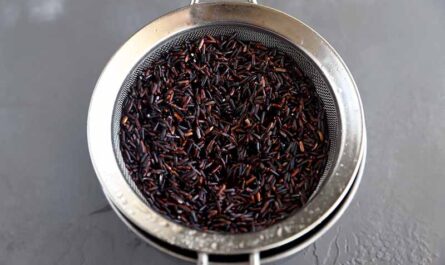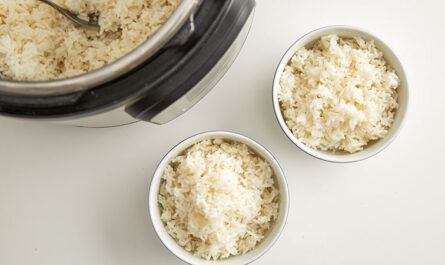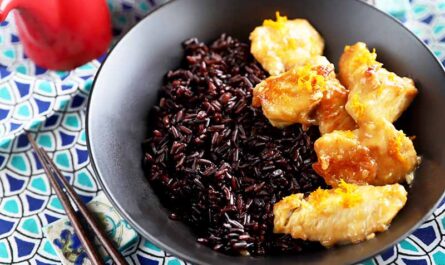In recent years, black rice has gained significant attention for its remarkable antioxidant properties and potential health benefits. Often referred to as ‘forbidden rice,’ black rice was once reserved for Chinese royalty due to its superior nutritional profile. Today, it has become a staple for many health-conscious individuals, including sushi lovers who seek to incorporate nutritious ingredients into their meals.
Black rice is celebrated for its rich content of antioxidants, particularly anthocyanins, which are responsible for its deep purple-black hue. These powerful compounds offer numerous health advantages, making black rice a valuable addition to a balanced diet.

The Nutritional Profile of Black Rice
Black rice is a whole grain with a striking appearance and impressive nutritional profile. It is an excellent source of protein, fiber, and essential minerals like iron and zinc. Unlike white rice, black rice retains its bran layer, which contains beneficial nutrients and antioxidants.
Rich in Anthocyanins
Anthocyanins are a group of antioxidants found in various fruits and vegetables, including black rice. These compounds are associated with numerous health benefits, including reducing inflammation, protecting against heart disease, and supporting brain health. The high anthocyanin content in black rice makes it a potent source of antioxidants.
High Fiber Content
As a whole grain, black rice is rich in dietary fiber. Fiber is essential for maintaining healthy digestion, promoting satiety, and regulating blood sugar levels. Incorporating black rice into your diet can support weight management and improve overall digestive health.
Health Benefits of Black Rice
The antioxidant properties of black rice contribute to its numerous health benefits. Here are some of the potential advantages of including black rice in your diet:
Anti-Inflammatory Effects
Inflammation is a natural response by the body to injury or infection. However, chronic inflammation can lead to various health issues, including heart disease and arthritis. The antioxidants in black rice, particularly anthocyanins, have been shown to reduce inflammation and protect against oxidative stress.
Heart Health
Regular consumption of black rice may help reduce the risk of heart disease. The antioxidants in black rice can lower cholesterol levels and improve blood vessel function, reducing the risk of developing cardiovascular conditions.
Weight Management
Black rice is a satisfying and nutrient-dense food that can support weight management. Its high fiber content promotes feelings of fullness, reducing the likelihood of overeating. Additionally, the low glycemic index of black rice helps regulate blood sugar levels, preventing spikes and crashes in energy.
Potential Cancer Protection
Some studies suggest that the antioxidants in black rice may have anticancer properties. Anthocyanins have been shown to inhibit the growth of cancer cells and reduce the risk of certain types of cancer. While more research is needed, incorporating black rice into your diet may offer some protective benefits.
Black Rice in Sushi
Sushi lovers can enjoy the unique flavor and health benefits of black rice by incorporating it into their favorite sushi recipes. The nutty taste and chewy texture of black rice add a delightful twist to traditional sushi rolls. Pairing black rice with fresh seafood and vegetables creates a nutritious and visually appealing dish.
For tips on preparing sushi rice, check out our sushi rice tips page. If you’re curious about the differences between sushi rice and other types, explore our comparison of sushi rice vs medium grain and sushi rice vs arborio rice.
How to Cook Black Rice
Cooking black rice is simple and similar to preparing other types of rice. Here’s a basic guide to cooking black rice:
Rinse and Soak
Start by rinsing the black rice under cold water to remove any excess starch. Soak the rice for at least 30 minutes to reduce cooking time and improve texture.
Cook
Combine one part black rice with two parts water in a pot. Bring to a boil, then reduce the heat to low and cover. Simmer for about 30-40 minutes or until the rice is tender and the water is absorbed.
Fluff and Serve
Once cooked, fluff the black rice with a fork and serve it as a side dish or use it in your favorite recipes.
Conclusion
Black rice stands out as a powerhouse of nutrients and antioxidants. Its rich anthocyanin content and numerous health benefits make it a valuable addition to any diet, especially for sushi enthusiasts. Whether you’re looking to enhance your meals with flavor and nutrition or seeking a natural way to support your health, black rice offers a delicious and wholesome option.
For more information on the health benefits of black rice, visit WebMD’s health benefits page.

FAQs
Is black rice gluten-free?
Yes, black rice is naturally gluten-free, making it an excellent option for individuals with gluten sensitivities or celiac disease.
Can black rice be used in all sushi recipes?
While black rice can be used in many sushi recipes, its unique flavor and texture may not complement all types of sushi. Experiment with different ingredients to find the best combination for your taste.
How does black rice compare to white rice in terms of nutrition?
Black rice is more nutritious than white rice, as it contains higher levels of protein, fiber, and antioxidants. Its nutrient-dense profile makes it a healthier choice for those seeking to improve their diet.
This article contains affiliate links. We may earn a commission at no extra cost to you.




